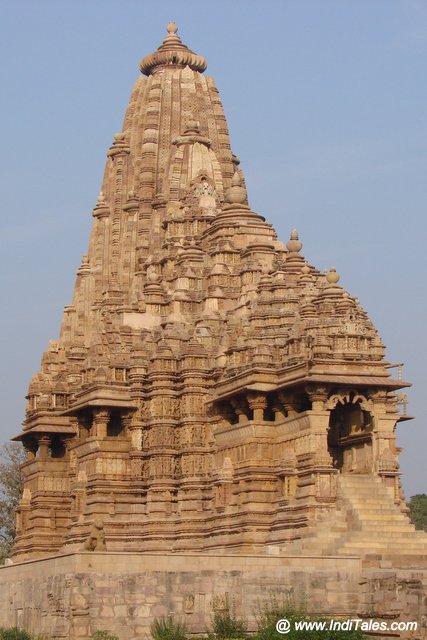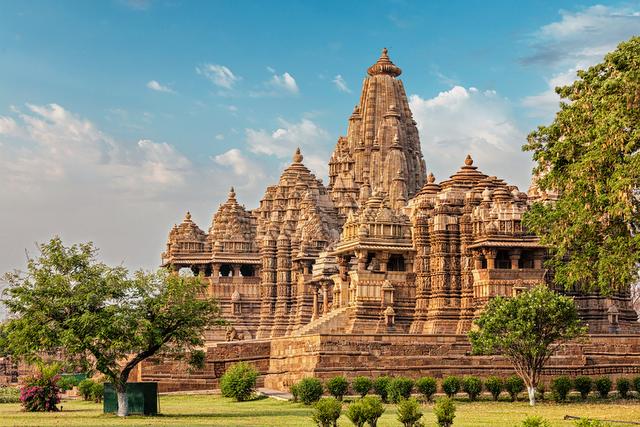Kandariya Mahadev temple at Khajuraho is the epitome of North Indian Temple architecture style. It is a 10-11th CE gem left to us by the then ruling Chandela dynasty. Chandelas kingdom was called Jejahuti with its capital at Khajuraho or Kharjuravahaka.
10-11th CE India has seen some of the best examples of Indian Temple Architecture across geographies and styles. This includes Brihdeeshwara Temple in Thanjavur, Hoysala Temples in Karnataka, Sun Temple at Modhera, Lingaraja Temple at Bhubaneshwar.
History of Kandariya Mahadev Temple
As per an inscription found on the mandapa of the temple, it was built during the reign of King Vidyadhara who reigned during early part of 11th CE. He is best known for fighting the first invasion my Ghazni. Ghazni returned after few years and fought another inconclusive battle. As per some sources, this temple was built to celebrate the defeat of Ghazni.
Temple was built between 1025-50 CE.

It is also possible that it was indeed conceptualized by Vishwanatha – the predecessor of Vidyadhara. It was dedicated to Shiva, the family deity of the Chandelas. Anyway, the temple belongs to a period that can easily be called the golden era of Indian Temple Architecture.
Since 1986, Khajuraho temples are a UNESCO World Heritage Site.
Etymology
Kandariya comes from the word Kandara that refers to the caves on the mountain tops. So, Kandariya Mahadev can simply mean the cave of the Mahadev or the lord of the caves.
It is said that along with Matangeswar and Vishwanath temples, Kandariya Mahadev temple completes a trinity of 3 primary Shiva temples of Khajuraho. The three Devi temples belonging to Chausath Yogini, Chhatri Devi and Jagadambi form the other intersecting triangle. Together these 6 temples form a Yantra or a sacred diagram as defined in this paper.
Visiting Kandariya Mahadev Temple
I remember standing in front of Kandariya Mahadev temple early morning one winter. Sun rays were playing with the contours of the temple. You could almost hear their morning conversation.

The temple shimmered with the first rays of run fell on it. It did not look like it is carved in stone. It appeared to be made in sandalwood, with fine shades of pale pink appearing and disappearing with sunrays.
I sensed a rhythm in the constitution of the temple. If it were the perfect proportions of…
Click Here to Read the Full Original Article at Inditales…
